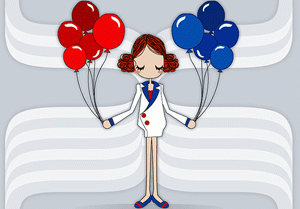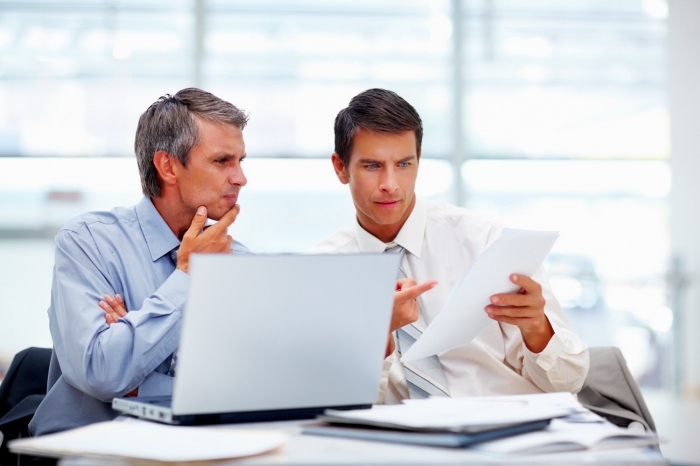Assets and liabilities of the organization - two components of any financial system, reflected in sections of the balance. Everyone has heard these concepts, but not everyone can confidently say what they mean. Let's talk about them, find out what unites them, how they differ and why they are inseparable in financial reports and ordinary everyday situations.
Balance sheet - the focus of property and sources
Balance is a balance in any environment - material, physical, financial. The balance sheet is also a balance between property and sources of its receipt. It is a convenient tabular form for summarizing information about the financial and economic condition of the company and the main report of the company, consisting of two parts - asset and liability.
At its core, this is a table that gives answers to a ton of questions:
- size of property owned by the company;
- volume of turnover of the enterprise;
- sources and reserves of financing.
Based on the balance sheet data, an analysis of assets and liabilities is carried out, further activities of the company are planned, deficiencies in production management are determined and measures are taken to eliminate them.
Two parts of balance
The structure of assets and liabilities in the balance sheet is extremely simple. The asset balance reflects the value of the property. It consists of two sections, each of which takes into account different types of property: money, material assets and even those things that cannot be seen in material form.
The second part of the balance sheet is liability. It also has several sections.

They take into account the sources that participated in the acquisition of property: the stock (authorized) capital of the company, various funds and reserves, profit and credit obligations.
Thus, the principle of balance is respected - the value of property (assets) corresponds to the total size of sources (liabilities) for its acquisition. Two parts of the balance, i.e. assets and liabilities are always equal. It is impossible to buy property for an amount greater than that available in the enterprise.
Key asset characteristics
There are several groups of property of the enterprise:
- Current assets are money held at the cash desk or accumulated in settlement, current, foreign currency and other accounts with the bank, as well as other current assets, the main quality of which is the ability to quickly turn into money. For example, accounts receivable from counterparties that can pay it off during the year.
- Financial investments do not have circulation in current operations. On long-term terms, they are invested in construction projects, the purchase of securities, shares of various corporations, participate in investment projects and cannot be converted into cash throughout the year.
- Long-term and long-term assets or fixed assets (structures, equipment, machine tools and other objects).
- Intangible assets (trademarks, patents, brands, licenses, software products).
The value of all these groups of property is reflected in two sections of the first part of the balance sheet.
Organization assets: first section of the balance sheet
The property of the company consists of objects owned by the enterprise. They are used in the activities of the company from which profit is planned.
Assets are heterogeneous in composition. The first section is fully devoted to accounting for non-current assets, i.e., funds not circulating in the company, but participating in the production process. Any product is manufactured on machine tools and production lines located in industrial buildings. These are fixed assets.
In addition to objects, structures and equipment, software products, trademarks and even the business reputation of the manufacturer are directly involved in the manufacturing process. Such intangible objects also relate to property and are defined as intangible assets.
Assets of the second section
The assets of the second section of the balance sheet of the company take into account working capital, i.e., directly participating in the company's turnover:
- productive reserves;
- goods purchased for resale;
- finished products;
- funds at the cash desk of the company and on bank accounts;
- accounts receivable, which is the debt of buyers for already exported, but so far unpaid products.
So, in the second section of the balance sheet asset, all current assets of the company are taken into account.
Liabilities of the enterprise: funds, reserves, liabilities
Assets do not arise from nowhere, they are acquired from the formed sources - liabilities, so the sources participate in the formation of property. In dry accounting language, liabilities are defined as follows: the totality of all sources and obligations of a company.
Here are some of them:
- The authorized or joint-stock capital, consisting of the contributions of the co-founders of the company, is the starting capital, which forms almost any type of asset.
- Additional capital creates additional financial resources that appear, as a rule, when revaluation of fixed assets. They also increase the company's capital used to increase assets.
- retained earnings It is the final financial result of the company’s work in the reporting period and is used at the discretion of management: to expand production or pay dividends.
- Loans or loans also belong to the category of liabilities of the balance sheet - the source for the funds of which it is possible to reconstruct production or repair existing capacities.
- Accounts payable arises periodically to personnel, suppliers or to pay taxes and shows the size of a debt.
Liabilities distribution in balance sections

Liabilities also have a heterogeneous structure and are accounted for in different sections of the balance sheet.
The third section of the balance sheet and the first in its passive part accumulates information about the size of the authorized, additional, reserve capital and retained earnings resulting from the activities of the company.
The fourth section reflects information on borrowed funds - loans, loans - short-term or long-term.
The fifth section of the balance sheet provides complete information about the availability and volume of accounts payable of the company.
The total amount of all liabilities of the second part of the balance sheet always corresponds to the amount of assets reflected in the first.
Balance Interaction
Assets and liabilities of the company closely interact with each other. Any change in one part of the balance immediately entails a corresponding change in another. Moreover, with an increase in liabilities by the same amount, the size of assets increases. Similarly, when lowering the cost. That is why the balance of parts of the balance is not disturbed.
It should be remembered that changes in the value of assets always occur from changes in the size of liabilities, because they are the sources of assets. To increase or decrease assets can only be due to liabilities. Both parts of the table are equal, because that is why it is called balance. With proper business conduct, these two parts remain balanced.
Consider how in practice the dynamics of assets and liabilities is changing. For example: a company takes a loan in the amount of 1 million rubles. Accounting records must be made twice:
- the amount of 1 million rubles is reflected in the current account in the asset balance;
- the same amount is taken into account in the passive part of the balance in the obligations section (after all, the loan will have to be repaid).
It is the double recording of accounting transactions that provides a reliable reflection of the operations performed. In this way, the balance between the parts of the balance sheet is maintained. Proper asset and liability management is the art of great financiers and ordinary accountants.
The formula verified by international financial organizations accurately reflects the interaction of these two concepts:
Assets = Liabilities = Equity + Liabilities.
Having defined the concepts of “assets and liabilities” and “liabilities”, we will deal with the usual, but not always understandable meaning of the word “capital”. The generally accepted rules established that the capital is part of the assets of the company remaining after deducting all commitments made.
Assets and liabilities of personality
Understanding the basics of accounting helps to clarify the relationship of liabilities and
assets at the everyday level in relation to personal finances and the family budget, as well as competently formulate it. If you transfer the accepted accounting concept to personal finance, you get the following picture:
- assets - this is all that a person owns and uses, regardless of whether it requires costs or generates income;
- liabilities - this is a person’s obligations: debts, taxes, insurance premiums, all expenses + retained earnings remaining after all payments.
Distributed profit as such does not exist. Having distributed, it ceases to exist and goes into the category of assets. The accumulated profit is capital. So the accounting asset and liability are projected onto privacy.








